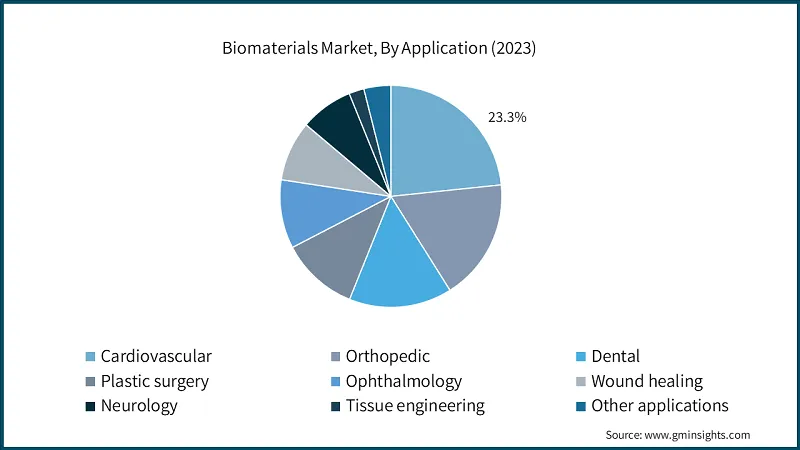What are biomaterials? Explore This Fascinating Field 24
What are biomaterials?
Biomaterials are artificial or natural materials designed to work with biological systems in a medical setting. They can be used for a variety of tasks, including the replacement or restoration of organ and tissue functions. In order to improve or restore the quality of life, these materials bridge the gap between living and non-living matter, which is an essential function of modern medicine.
Metals, ceramics, polymers, and composites are some of the materials from which biomaterials can be made. These materials are then specially designed to fulfill certain medical requirements by virtue of their distinct characteristics, such as biocompatibility, mechanical strength, and rates of degradation.

By combining ideas from biology, chemistry, physics, and engineering, the area of biomaterials is, by its very nature, multidisciplinary, creating novel answers to increasingly difficult medical problems. Oral implants, dental materials, heart devices, and medication administration systems are examples of common applications. Medical research is constantly being advanced by biomaterials, which makes it possible to create therapies that are less invasive and more successful.
In tissue engineering, biocompatible scaffolds facilitate cell proliferation and tissue regeneration, whereas bioresorbable materials offer transient support that eventually disappears throughout the healing process. With new hope for patients with illnesses once thought to be incurable, biomaterials research and development promise to transform healthcare.
What are biomaterials?
Natural or artificial materials created with the intention of interacting with biological systems for medical or diagnostic purposes are known as biomaterials. Their composition encompasses an extensive array of substances, including metals, ceramics, polymers, and composites, all of which are specially designed for particular uses due to their distinct characteristics.
Why is biocompatibility important, and why is it crucial in the development of biomaterials?
The term “biocompatibility” describes a material’s capacity to carry out its intended purpose in the host without causing any unfavorable local or systemic effects. Making sure the substance doesn’t trigger an immunological reaction or cause toxicity is part of this. The ability of the biomaterial to cohabit with bodily tissues without producing harmful reactions is essential for any medical use, and biocompatibility assures this.
Follow our Digiknowledge.co.in page for the latest updates about technology, bikes, cars, sports, lifestyle, and many more.
How do biomaterials contribute to tissue engineering?
In order to develop structures that preserve, enhance, or restore tissue functions, the area of tissue engineering mixes biomaterials with cells and bioactive chemicals. The scaffolding function of biomaterials allows cells to adhere to one another and develop into tissues. For injured tissues to regenerate, these scaffolds need to be biocompatible and encourage cell division and proliferation.
What are the common materials used for implants, and what properties do they possess?
Materials used in implants include metals (such as stainless steel and titanium), polymers (such as polyethylene and polylactic acid), and ceramics (such as alumina and zirconia). The selection of these materials is predicated upon their mechanical attributes, biocompatibility, and resilience to physiological conditions.
Metals are recognized for their robustness and endurance; ceramics for their compatibility and resistance to wear; and polymers for their adaptability and biodegradability.
What are some of the primary applications of biomaterials in medicine?
There are numerous uses for biomaterials, such as:
Orthopedic implants are used for joint and bone replacement or support.
Dental materials include crowns, fillings, and dental implants.
Cardiovascular Devices: vascular grafts, heart valve replacements, and stents.
Drug Delivery Systems: medication delivered in a controlled manner.
Items for wound care: dressings and tissue adhesives.
How are biosensors related to biomaterials, and what are their uses?
A biological component and a physicochemical detector are combined to create biosensors, which are analytical tools. To ensure biocompatibility and functionality, biomaterials are used in the construction of sensor components. In order to identify certain biological markers for diseases and provide prompt and precise diagnostic information, these sensors are essential to medical diagnostics.
What types of biomedical devices are made from biomaterials, and how do they benefit patients?
A wide range of instruments and apparatuses, such as prosthetic limbs, pacemakers, and artificial organs, are considered biomedical devices. Patients’ quality of life is enhanced by biomaterials, which guarantee these devices are secure and efficient for long-term use.
Materials for these devices frequently need to resemble natural tissues or blend in perfectly with the body.
What is regenerative medicine, and how do biomaterials support this field?
The goal of regenerative medicine is to replace or repair damaged organs and tissues by promoting the body’s natural healing processes. Because they release growth factors that aid in healing, convey stem cells to the site of injury, and serve as scaffolds for the creation of new tissue, biomaterials are essential. This method shows potential for treating ailments for which there aren’t many available treatments at the moment.
What are bioactive materials, and how do they differ from traditional biomaterials?
To encourage particular biological reactions, bioactive compounds interact with biological tissues. Bioactive materials have different properties from standard biomaterials, such as promoting bone formation, healing, and reducing inflammation.
To improve implants’ integration with the body, these materials are applied in a variety of ways, such as coatings and bone grafts.
What are biopolymers, and what advantages do they offer over synthetic polymers?
Biopolymers, like alginate, chitosan, and collagen, are polymers that occur naturally. They are superior to synthetic polymers in a number of ways, including cell growth support, biocompatibility, and biodegradability. Biopolymers are utilized in medication delivery systems, tissue engineering, and wound healing because they interact with the body more naturally.
What are the disadvantages of biomaterials?
A drawback is the scarcity of biomaterials that are appropriate for 3D printing, mechanically stable, and biocompatible. The difficulty of transforming these materials into self-supporting devices with ideal architectures and biomechanical qualities is another drawback.
Conclusion
Innovative medical materials, known as biomaterials, are revolutionizing our understanding of disease and recovery. They have many different applications, ranging from making implants last longer to promoting tissue regeneration. The creation of novel biomaterials in conjunction with ongoing research holds the potential to open up even more avenues for improved patient outcomes and cutting-edge medical treatments.
In the future, medicine will be able to heal the human body more naturally and effectively thanks to the integration of biocompatibility, bioactivity, and regeneration capacities.
What are some interesting facts about biomaterials?
Biomaterials provide support, enhancement, or replacement for injured tissue or a biological function in medical applications. They might be synthetic or natural. The ancient Egyptians employed sutures made of animal sinew as the first recorded application of biomaterials in history.
What are biomaterials made up of?
Biomaterials can be made from a variety of materials, including metals, glass, plastic, ceramics, and even biological cells and tissue. They can be redesigned to become fabrics, films, coatings, molded or machined parts, fibers, films, and foams for application in biomedical devices and goods.
How are biomaterials classified?
Biomaterials can be categorized as synthetic (such as metals, composites, polymers, and ceramics) or biological (such as organic and non-organic chemicals obtained from human, animal, or vegetable sources).
Can biomaterials be toxic?
When it comes to medical applications like medication delivery, tissue engineering, or diagnostics, biomaterials are materials with the ability to interact with biological systems. All biomaterials, on the other hand, are neither biocompatible or safe, which means that they don’t irritate the body or produce toxicity.




